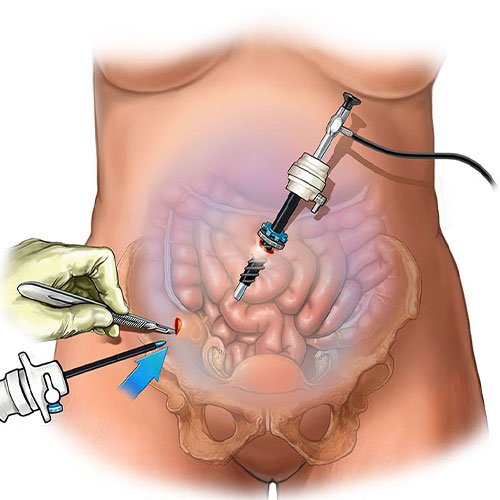
lap surgery
Lap Surgery
Laparoscopic surgery, often referred to as “lap surgery,” is a minimally invasive surgical technique used to diagnose and treat various medical conditions. Unlike traditional open surgery, which requires larger incisions, laparoscopic procedures involve making several small incisions (usually 0.5 to 1.5 cm) in the abdominal wall. A laparoscope—a thin tube with a camera and light—is inserted through one of the incisions, allowing surgeons to view the internal organs on a monitor and perform surgical tasks with specialized instruments through the other incisions.
While laparoscopic surgery has many advantages, it is not suitable for all patients or conditions. Factors such as the patient’s overall health, the specific medical issue being treated, and the surgeon’s expertise all play a role in determining whether laparoscopic surgery is the best option.

Benefits of Laparoscopic Surgery
Reduced Recovery Time: Patients typically experience shorter hospital stays and quicker recovery times compared to open surgery. Most patients can return to normal activities within a week or two.
Less Pain: Smaller incisions generally result in less postoperative pain and discomfort.
Minimal Scarring: The small incisions lead to less noticeable scars.
Lower Risk of Infection: With fewer and smaller incisions, the risk of wound infections is reduced.
Shorter Procedure Time: Many laparoscopic surgeries can be completed in a shorter time frame compared to their open counterparts.
Common Laparoscopic Procedures
- Cholecystectomy: Removal of the gallbladder.
- Appendectomy: Removal of the appendix.
- Hernia Repair: Repair of inguinal or hiatal hernias.
- Bariatric Surgery: Procedures for weight loss, such as gastric bypass or sleeve gastrectomy.
- Gastroesophageal Reflux Disease (GERD) Surgery: Procedures to correct GERD.
- Gynecological Procedures: Such as hysterectomy or ovarian cyst removal.
- Colorectal Surgery: For conditions like diverticulitis or colon cancer.
